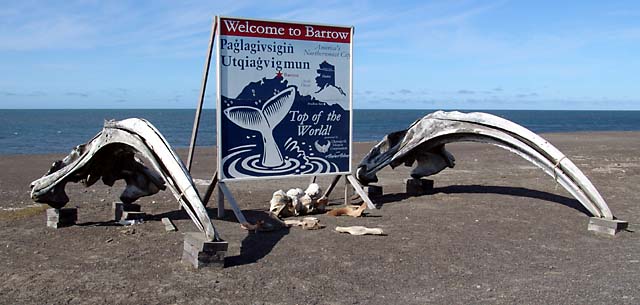
The Top of the World - Barrow
July 28-29, 2004
We signed up for a tour to Barrow, which is the northernmost settlement in the U.S., and is 330 miles north of the Arctic Circle. We flew to Barrow, took a guided tour of the town, stayed overnight in the Top of the World Hotel, and flew back to Fairbanks the next day.

Barrow has a population of about 4400 people, 60% of which are natives,
primarily Inupiat Eskimo. Whaling is a substantial activity in Barrow; the town
is allowed to take 22 whales per year. It is traditional among Eskimos to share
the whale meat with everyone in the village, regardless of whether they
contributed to the whale hunt or not.
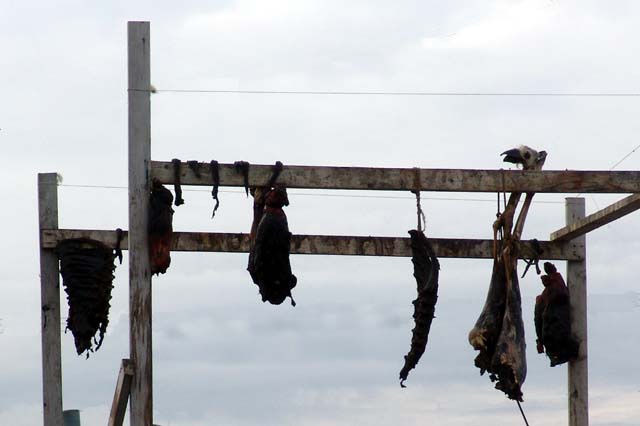
The native Eskimos depend on subsistence hunting to provide a large part of
their food. It was common to see meat hanging on racks to dry; this is seal and
caribou, according to our guide. The Eskimos have natural freezers in the form
of cellars dug into the permafrost. The average temperature in the permafrost is
18 degrees F, so meat placed in the cellars stay frozen year-round.
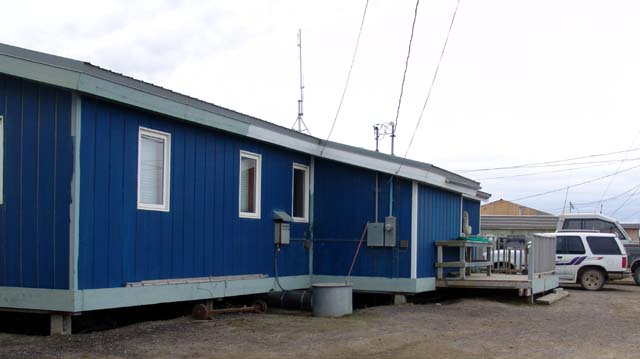
Most buildings that we saw in Barrow were elevated above the ground so that
heat from the building didn't go into the ground. Otherwise, the permafrost
would melt and the building would slide into a quagmire.

The land around Barrow is tundra. The permafrost starts about a foot under the surface. Walking on the tundra was like walking on a lumpy, soft carpet; it felt spongy. It was also soggy, so you had to be careful where you placed your feet.
The tundra was very flat and treeless; our guide said that the nearest hill
over 100 feet high is about 90 miles away.
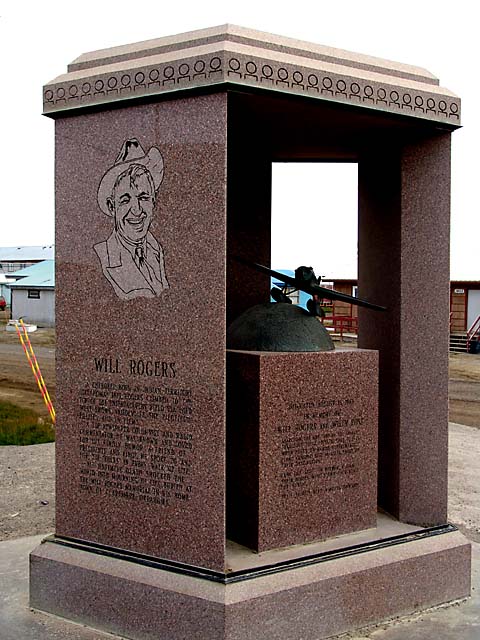
Will Rogers and Wiley Post, a famous arctic pilot, died in a plane crash in
1935 about 12 miles from Barrow.
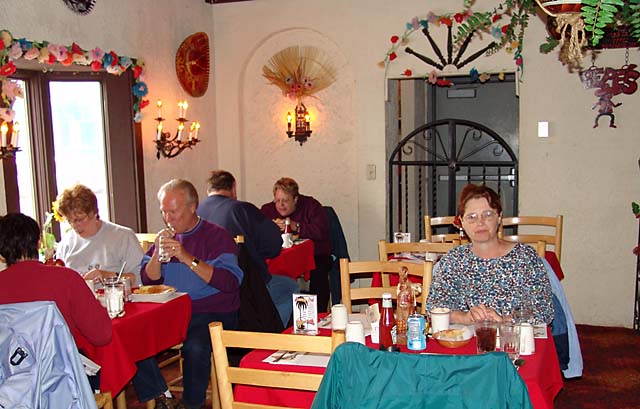
Nancy and I chose to have lunch at Pepe's restaurant, which has to be the
northernmost Mexican restaurant in the U.S. How's that for being "north of the
border"? The food was good.

After lunch we were taken to the Inupiat Heritage Center, which has an
excellent display on whaling. An Eskimo dance team performed for us. The music
was provided by the handheld drums you see in the background. Frankly, all the
dances looked and sounded very similar. I guess you have to know the language
and culture to appreciate the differences between them.
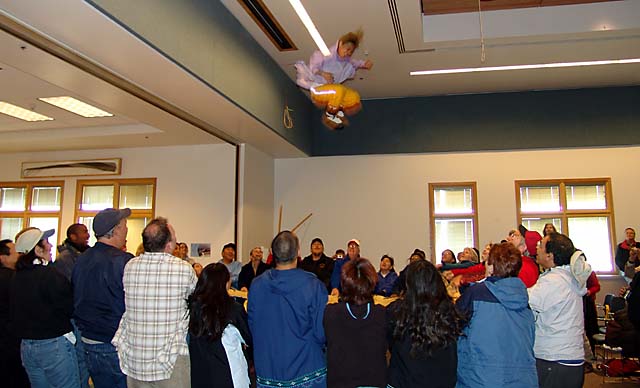
After the dances they demonstrated the blanket toss. A large blanket with a rope sewn into it is used to toss the person into the air. In this case, visitors on the tour were enlisted to help hold the blanket; note the cute one with the red hair and blue parka on the right.
The blanket toss has its origins in hunting; it was a way to get a person
higher so that caribou at a distance could be more easily spotted. Now it is
done primarily in festivals and celebrations.

This arch is composed of two whale bones and is often seen on postcards of
Barrow. Getting this picture required a long wait while everyone else in the
group had their picture taken in front of the arch (typical tourist style).
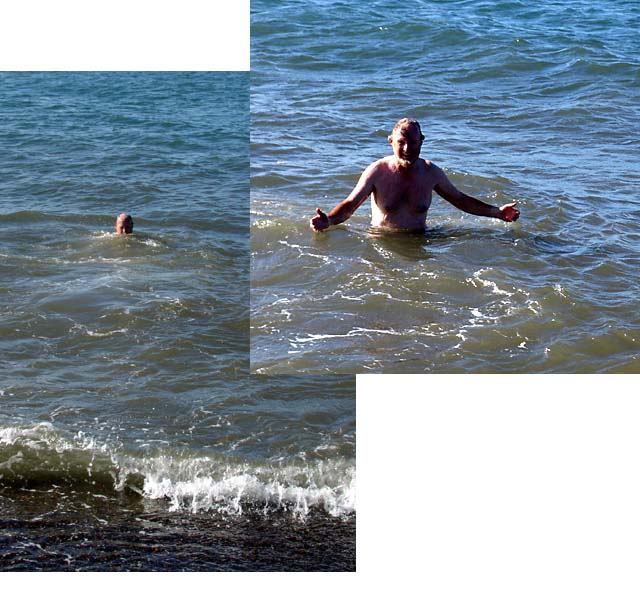
After a hard day of touring around, a dip in the Arctic Ocean was refreshing.
The air temperature was 44 degrees and the water temperature was 47 degrees; I
don't understand why no one wanted to join me in the water. Actually, I was one
of four who went into the water to join the Barrow Polar Club. Now I have a
certificate and patch to prove it.

At this time of the year the sun is above the horizon 24 hours per day. Hence
we are in the land of the "midnight sun". This photo was taken just before
midnight.

Looking north over the Artic Ocean the sun is still visible. I couldn't
include it in the photo because of its brightness, but you can see its
reflection on the water. For you old scouts, the sun is about 2 fingers (at arms
length) above the horizon. The next sunset in Barrow will be on Aug. 2, which is
5 days from now.
The next morning we flew back to Fairbanks. We will be heading southeast from Fairbanks to Tok and then, if the forest fires don't interfere, go northeast on the Taylor and Top of the World highways to Dawson City in the Yukon. Although the forest fires are still burning, the news reports indicate that the situation is better than earlier. So hopefully, we won't have the smoke problems we encountered as we drove from the Yukon into Alaska.